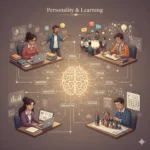The question of how many languages can a person learn is often met with two extremes: either the mythical claims of hyperpolyglots or the discouraging reality of struggling with a single second language. The truth is grounded in the practical constraints of time and focus, not the brain’s ultimate capacity. To understand more about the philosophy guiding our insights, read about .
The goal is to move past the traditional one-size-fits-all model of education and into an era of truly personalized learning. If you’re interested in how technology is making this possible, read our analysis on the role of The Personal AI Tutor. The single best reason to learn about personality theories is to reflect on your own approach to the world. As we’ll see, understanding yourself is a good reason to learn about personality theories it’s the cornerstone of self-mastery.
There is no definitive upper neurological limit to how many languages you can learn. However, the active maintenance required for true fluency means that the number of languages a person can realistically master is generally considered to be 4 to 7.
The Average vs. The Ambitious: Real-World Multilingualism
While over 7,000 languages exist, let’s look at the reality of how many languages can a person learn in the world:
- The Average Person: Most of the global population speaks between 1 and 2 languages. Statistically, how many languages can the average person speak? Only a small fraction of the world (less than 3%) is fluent in more than four languages.
- The Realistic Cap: Language experts and polyglots find that an individual can actively maintain 6 to 12 languages at a time. Beyond this, the time needed for consistent practice makes it nearly impossible to keep them all at a conversational level, leading to passive knowledge instead of true fluency. This drive for progress makes highly conscientious people receptive to motivational tools like gamification, as explored in our post, Gaming for Growth.
Practical Constraints: Time, Effort, and the Brain
The true barrier to maximizing your language count is the hundreds, or even thousands, of hours required to achieve fluency in each language.
The Time Cost: How Many Languages Can You Learn in a Year?
Acquiring professional working proficiency in a single language requires significant time.
Given these intense time demands, the question becomes: how many languages can you learn in 10 years? If you can consistently dedicate 1-2 hours per day to language learning over a decade, you could realistically achieve high proficiency in 5 to 8 languages, especially if they share similar linguistic roots.
The Interference Factor: How Many Languages Should I Learn at Once?
For most adult learners, focus is key.
- Focus on One First: Stick to one language until you’ve reached a solid intermediate level (B1/B2) to establish a strong foundational system.
- The Sweet Spot (2-3): Highly disciplined learners can manage 2 to 3 languages simultaneously. It is often recommended to choose languages from different families (e.g., German and Japanese) to minimize linguistic interference (mixing up grammar and vocabulary).
The Critical Period: How Many Languages Can a Child Learn?
Children exhibit superior neural plasticity, allowing them to acquire multiple languages simultaneously with native-like fluency and accent. This ability is highest during the early years, with a sharp decline in grammatical learning ability setting in around the age of 17 or 18, supporting the idea of a critical period for language acquisition.
Final Takeaway and Actionable Advice
Ultimately, your success hinges on interest, motivation, and a disciplined system for maintenance. The maximum number of languages you can learn is not a measure of intelligence, but a reflection of your time management and dedication to practice.
To truly maximize your linguistic potential:
- Prioritize Maintenance: Dedicate a scheduled portion of your time each week to practicing your older languages to prevent decay.
- Use Strategic Interleaving: Alternate between your languages during study sessions to improve memory recall and prevent burnout.
Ultimately, self-mastery through understanding your personality’s effect on your learning style is a fundamental principle of human potential. This individual growth, when multiplied across society, contributes directly to the kind of innovation and competence that fuels sustained economic growth.




